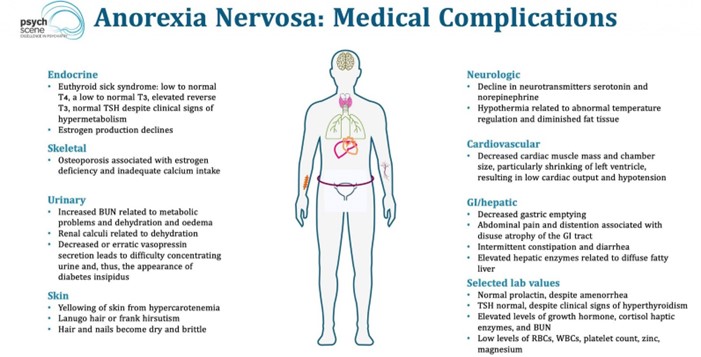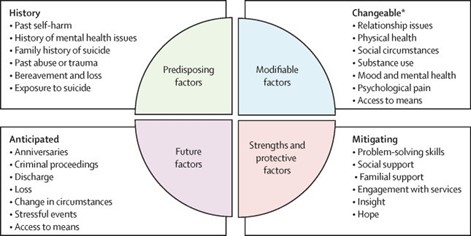The nurse provides care for a client with anorexia nervosa. The nurse knows which statements aretrue regarding anorexia nervosa?
Clients diagnosed with anorexia nervosa often see themselves as overweight.
Anorexia Nervosa has the highest mortality of all mental disorders.
Clients diagnosed with anorexia nervosa often see themselves as emaciated and underweight.
Clients diagnosed with anorexia nervosa are self-indulgent.
Correct Answer : A,B
Option a. Clients diagnosed with anorexia nervosa often see themselves as overweight is true. Anorexia nervosa is characterized by a distorted body image and an intense fear of gaining weight. Even when they are severely underweight, individuals with anorexia nervosa may perceive themselves as being overweight.
Option b. Anorexia Nervosa has the highest mortality of all mental disorders is true. Anorexia nervosa is a serious mental illness that can have severe physical and psychological consequences, including death.
Option c. Clients diagnosed with anorexia nervosa often see themselves as emaciated and underweight is not true. As mentioned above, individuals with anorexia nervosa often have a distorted body image and may perceive themselves as being overweight even when they are severely underweight.
Option d. Clients diagnosed with anorexia nervosa are self-indulgent is not true. Anorexia nervosa is a complex mental illness that is not caused by self-indulgence.
Option e. Adolescent females are most affected is true. While anorexia nervosa can affect individuals of any gender and age, it is most diagnosed in adolescent females.

Nursing Test Bank
Naxlex Comprehensive Predictor Exams
Related Questions
Correct Answer is D
Explanation
Refeeding syndrome is a potentially life-threatening complication that can occur when a person with anorexia nervosa or other forms of malnutrition begins to eat again after a period of starvation. It is characterized by electrolyte imbalances and fluid shifts that can lead to cardiovascular dysfunction, including heart failure and arrhythmias. Therefore, when caring for a patient with anorexia nervosa who is being refed, it is important for the nurse to closely monitor the patient’s cardiovascular system for signs of dysfunction.
Option a. Endocrine system dysfunction can occur in patients with anorexia nervosa, but it is not typically associated with refeeding syndrome.
Option b. Respiratory system dysfunction can occur in patients with anorexia nervosa, but it is not typically associated with refeeding syndrome.
Option c. Musculoskeletal system dysfunction can occur in patients with anorexia nervosa, but it is not typically associated with refeeding syndrome.

Correct Answer is C
Explanation
Schizophrenia is a severe mental illness associated with an increased risk of suicide. Individuals with schizophrenia are at a higher risk of suicide due to the presence of symptoms such as depression, hopelessness, and social isolation. Unemployment is also a risk factor for suicide as it can contribute to financial and social stress.
The other options do have some risk factors, but not as high as the individual in option c. Alcohol use and being independent-minded are not necessarily significant risk factors for suicide, and being active in church can be a protective factor. While depression is a significant risk factor for suicide, it is not the only factor, and having two best friends may be a protective factor. Diabetes, in and of itself, is not a risk factor for suicide.

Whether you are a student looking to ace your exams or a practicing nurse seeking to enhance your expertise , our nursing education contents will empower you with the confidence and competence to make a difference in the lives of patients and become a respected leader in the healthcare field.
Visit Naxlex, invest in your future and unlock endless possibilities with our unparalleled nursing education contents today
Report Wrong Answer on the Current Question
Do you disagree with the answer? If yes, what is your expected answer? Explain.
Kindly be descriptive with the issue you are facing.
